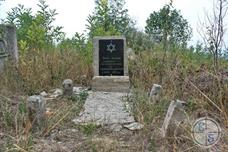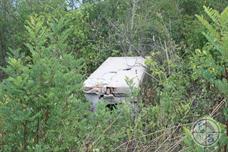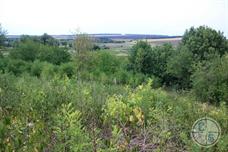Olgopol
Olgopol, 2011 г.
Olhopil name was originally given by Empress Catherine II in 1795, another little town (Chechelnik) in honor of her granddaughter Olga Pavlova.
In 1812, the village Roguzka Chechelnitsky, renamed Olhopil, received town status and became a district center (Chechelnik returned to the former name). The people Olhopil ironically called Golopol or Golopole due to abject poverty of the county town.
After the war, the former county town gradually turned into a village with a population of about five thousand people.
In 1812, the village Roguzka Chechelnitsky, renamed Olhopil, received town status and became a district center (Chechelnik returned to the former name). The people Olhopil ironically called Golopol or Golopole due to abject poverty of the county town.
After the war, the former county town gradually turned into a village with a population of about five thousand people.
Several Jewish families lived in Roguzke (later Roguzka Chechelnitsky) in the second half of the XVIII century., Before receiving the settlement city rights. On receipt of the status of county town borough number of its Jewish population increased significantly.
In 1834 the Jewish community numbered 217 people Olhopil. While it does not have its own building for the synagogue, but the rabbi contain, Hazan, Shames, Gabai and "baal-crust" (Torah reader). The community was also a Shoikhet and Mogel invited from neighboring villages. In Olhopil was only one header.
In 1845 she acted in Olhopil header for four, two of them - the second stage. Most headers taught (at least nominally) Russian language. In heders were about fifty children.
In October 1851 in Olhopil opened breech Jewish school first grade. In 1854, in two of his classes is 25 students. The school had only three teachers: the superintendent of the Christian religion, he also taught Russian language and arithmetic, and two Jews - Jewish subjects and teachers of German.
In 1853, according to official figures in Olhopil were wooden prayer house, which had 256 parishioners' spiritual rabbi "p. Shalom Meir Greenburg and breech Rabbi Noakh.
In 1834 the Jewish community numbered 217 people Olhopil. While it does not have its own building for the synagogue, but the rabbi contain, Hazan, Shames, Gabai and "baal-crust" (Torah reader). The community was also a Shoikhet and Mogel invited from neighboring villages. In Olhopil was only one header.
In 1845 she acted in Olhopil header for four, two of them - the second stage. Most headers taught (at least nominally) Russian language. In heders were about fifty children.
In October 1851 in Olhopil opened breech Jewish school first grade. In 1854, in two of his classes is 25 students. The school had only three teachers: the superintendent of the Christian religion, he also taught Russian language and arithmetic, and two Jews - Jewish subjects and teachers of German.
In 1853, according to official figures in Olhopil were wooden prayer house, which had 256 parishioners' spiritual rabbi "p. Shalom Meir Greenburg and breech Rabbi Noakh.
In 1860, a community numbering 715 people (all residents of the village of 4281), contained a stone synagogue and two wooden prayer house. The Jews of the county town for the most part were small traders and artisans. Among the largest groups were craftsmen coopers (22 of 48 masters of this craft workers), tailors (16 artists from 30), blacksmiths (6 of 11). Due to the remoteness of the district center from the railway most common among Jews activity was carting (only Olhopil had 45 cabs).
In 1881, by order of the Committee of public good health olgopolskie city authorities closed Jewish cemetery on the banks of the river Savranki, as it was in the immediate vicinity (40 yards instead of 100 permitted) on the outskirts of Matskovki located on the same river above Olhopil.
In 1889, there were three synagogues in Olhopil "Olter Klyus" ( "Old Synagogue"), "Besmedresh" ( "House of the interpretation"), "Nye Klyus" ( "New Synagogue"), lived in the town of Rabbi breech Gersh- County Mendel Finkelstein.
Most of the trade district town were in the hands of the Jews, they are owned by the variety of shops and stalls.
At the beginning of the 1910s. in any city, and larger enterprises. The Jews kept all nine city hotels, brewery, the city's only tea, wood and forest stocks (of the timber is exported). They belonged to two-hour workshops, printing houses, a shop and most of the shops.
In 1881, by order of the Committee of public good health olgopolskie city authorities closed Jewish cemetery on the banks of the river Savranki, as it was in the immediate vicinity (40 yards instead of 100 permitted) on the outskirts of Matskovki located on the same river above Olhopil.
In 1889, there were three synagogues in Olhopil "Olter Klyus" ( "Old Synagogue"), "Besmedresh" ( "House of the interpretation"), "Nye Klyus" ( "New Synagogue"), lived in the town of Rabbi breech Gersh- County Mendel Finkelstein.
Most of the trade district town were in the hands of the Jews, they are owned by the variety of shops and stalls.
At the beginning of the 1910s. in any city, and larger enterprises. The Jews kept all nine city hotels, brewery, the city's only tea, wood and forest stocks (of the timber is exported). They belonged to two-hour workshops, printing houses, a shop and most of the shops.
In 1900, Zionists opened Saturday School for adults with teaching handicraft professions in schools are more than 80 people. Zionist Organization was active in the town and beyond.
Since February 1919 Olhopil repeatedly exposed to armed assaults.
14-16 May 1919 gang Atamans Zabolotnogo and Chaly pogrom during which 20 people died. 4 October of the same year, on Yom Kippur, the pogrom was made by peasants of nearby villages, and the next day the city was sacked by passing through it a part of Denikin.
In 1924, there were 10,200 residents Olhopil, 2800 of them Jews and 59 Poles. In 1920-ies. here chetyrёhklassnaya school with Yiddish was opened (in the early 1990s. in its premises is a branch high school extended day).
In 1930-ies. Jewish collective farm "Pratsіvnik" ( "Worker") was established. In the prewar years, the community led Shoikhet, who died in the ghetto during the Nazi occupation.
Olhopil Jewish population in 1939 was 660 persons (11% of the population).
Since February 1919 Olhopil repeatedly exposed to armed assaults.
14-16 May 1919 gang Atamans Zabolotnogo and Chaly pogrom during which 20 people died. 4 October of the same year, on Yom Kippur, the pogrom was made by peasants of nearby villages, and the next day the city was sacked by passing through it a part of Denikin.
In 1924, there were 10,200 residents Olhopil, 2800 of them Jews and 59 Poles. In 1920-ies. here chetyrёhklassnaya school with Yiddish was opened (in the early 1990s. in its premises is a branch high school extended day).
In 1930-ies. Jewish collective farm "Pratsіvnik" ( "Worker") was established. In the prewar years, the community led Shoikhet, who died in the ghetto during the Nazi occupation.
Olhopil Jewish population in 1939 was 660 persons (11% of the population).
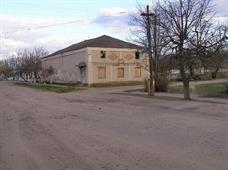 |
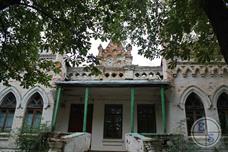 |
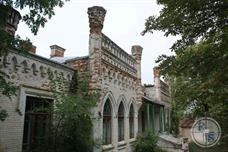 |
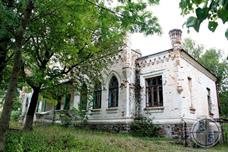 |
| The former synagogue, then - cinema. Photo by Elena Voinarovska | The building of the district hospital with Gothic Revival elements | ||
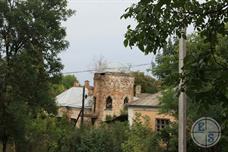 |
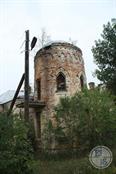 |
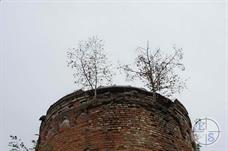 |
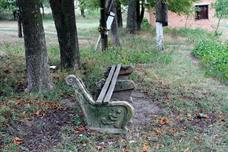 |
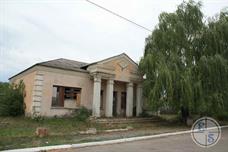 |
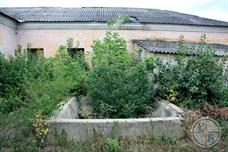 |
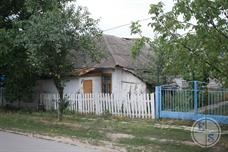 |
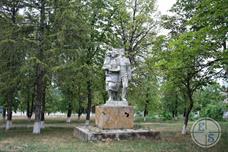 |
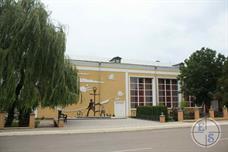 |
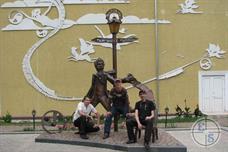 |
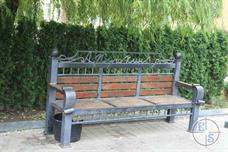 |
|
The Romanian occupation authorities have turned the Jewish Quarter in the ghetto, where they lived about 100-150 families of local Jews, as well as several hundred Jews deported from Bessarabia. The building of the synagogue, "Nye Klyus" were settled Jews deported from the Baltic States. Many inhabitants of the ghetto were killed in November and December 1941 by the typhus epidemic.
In May 1943 Olhopil brought about a hundred Romanian Jews from the "political" camps in Vapnyarka - leaders of the Communist and Social Democratic parties. Tips To Creating ghettos of organized child care, has created a soup kitchen, bath, expanded and opened a general dental clinic, the services enjoyed by the representatives of local authorities.
In 1943, there was Olhopil Italian military unit. According to the recollections of witnesses survived the occupation, daily Italians brought into the ghetto food, fed the hungry Jewish children.
According to Romanian statistics, in 1943 in the ghetto Olhopil were about 700 Jews, of whom about 500 locals.
Olhopil Jewish population in 1939 was 660 persons (11% of the population).
In May 1943 Olhopil brought about a hundred Romanian Jews from the "political" camps in Vapnyarka - leaders of the Communist and Social Democratic parties. Tips To Creating ghettos of organized child care, has created a soup kitchen, bath, expanded and opened a general dental clinic, the services enjoyed by the representatives of local authorities.
In 1943, there was Olhopil Italian military unit. According to the recollections of witnesses survived the occupation, daily Italians brought into the ghetto food, fed the hungry Jewish children.
According to Romanian statistics, in 1943 in the ghetto Olhopil were about 700 Jews, of whom about 500 locals.
Olhopil Jewish population in 1939 was 660 persons (11% of the population).
After the war, the former county town gradually turned into a village with a population of about five thousand people.
In Olhopil in the early 1990s. lived in a little over ten Jewish pensioners, they all lived in the center, on Lenin Street.
Last lived in Olhopil Jew had died 2 months before the arrival of the expedition in August 2012
V.Lukin, "100 Jewish settlements in Ukraine"
In Olhopil in the early 1990s. lived in a little over ten Jewish pensioners, they all lived in the center, on Lenin Street.
Last lived in Olhopil Jew had died 2 months before the arrival of the expedition in August 2012
V.Lukin, "100 Jewish settlements in Ukraine"
Vinnitsa Region

My shtetl
My shtetl
Jewish towns of Ukraine
Jewish towns of Ukraine
